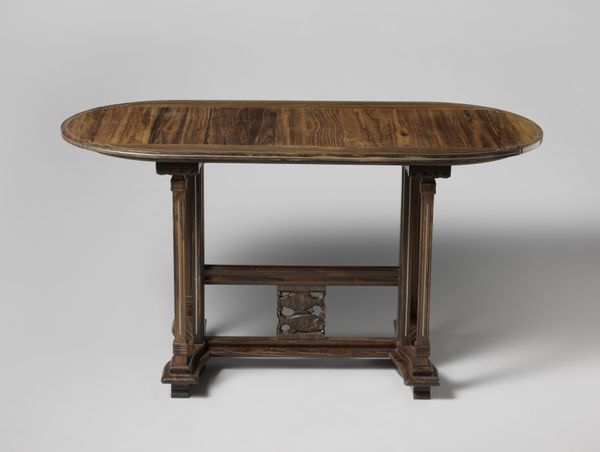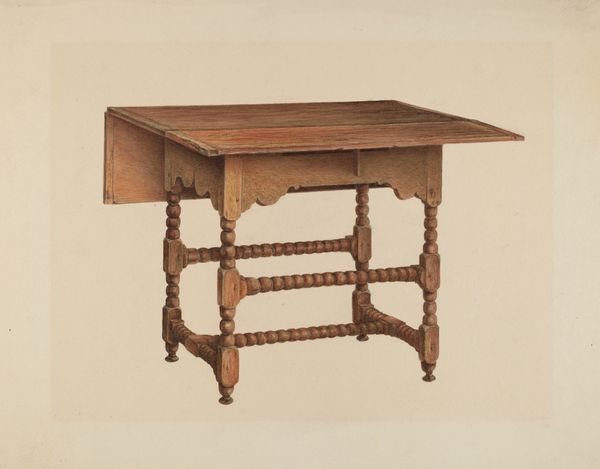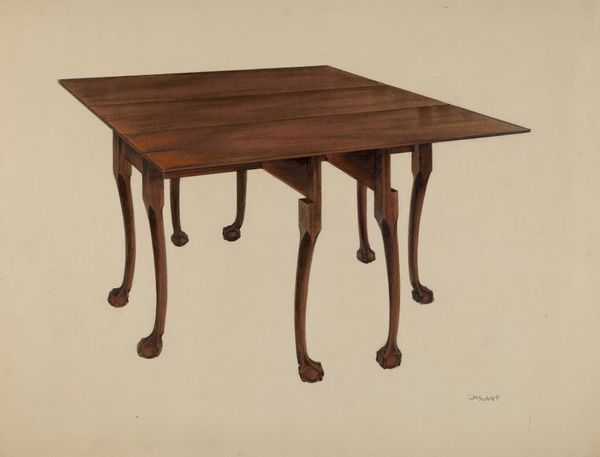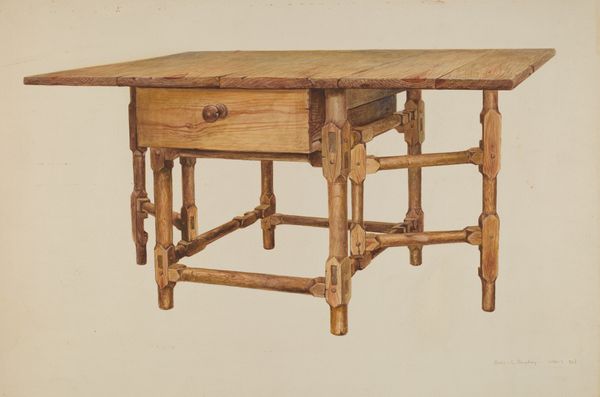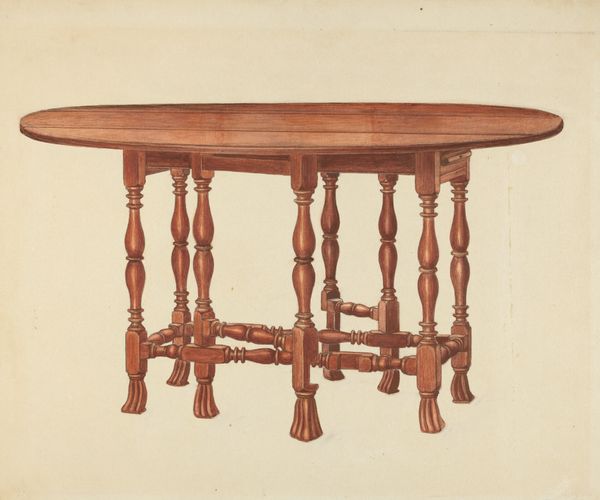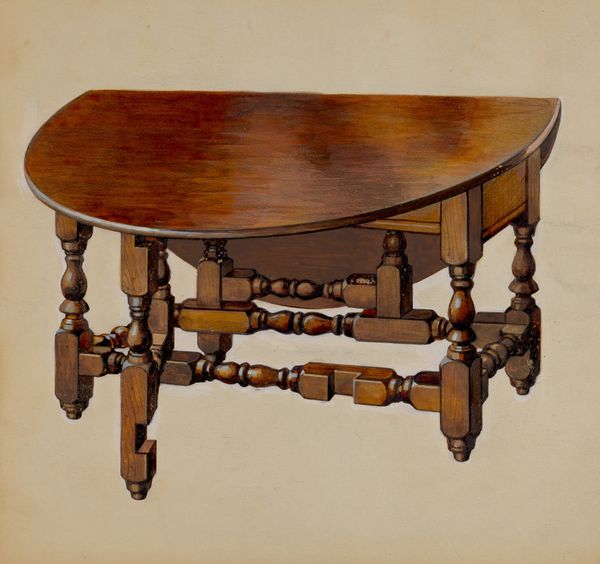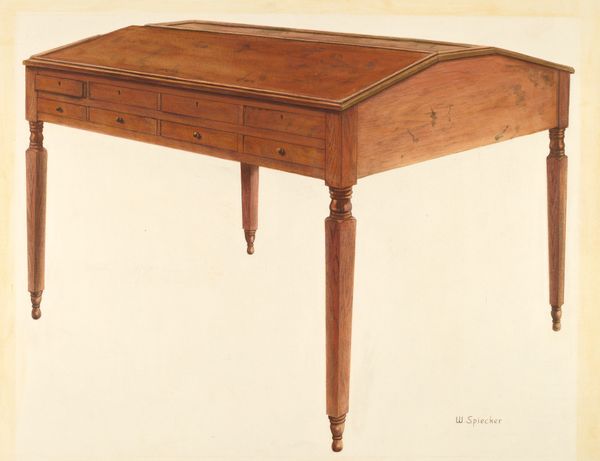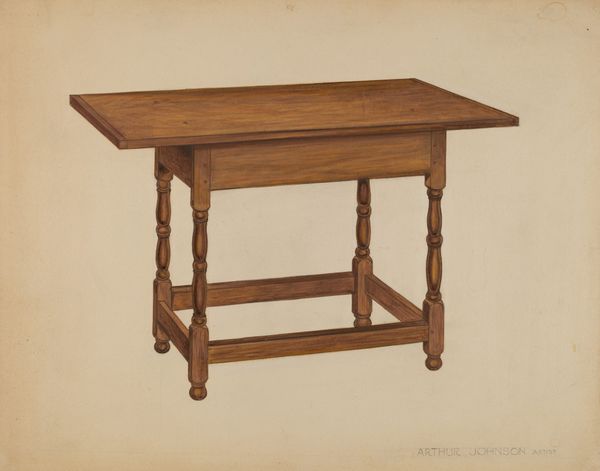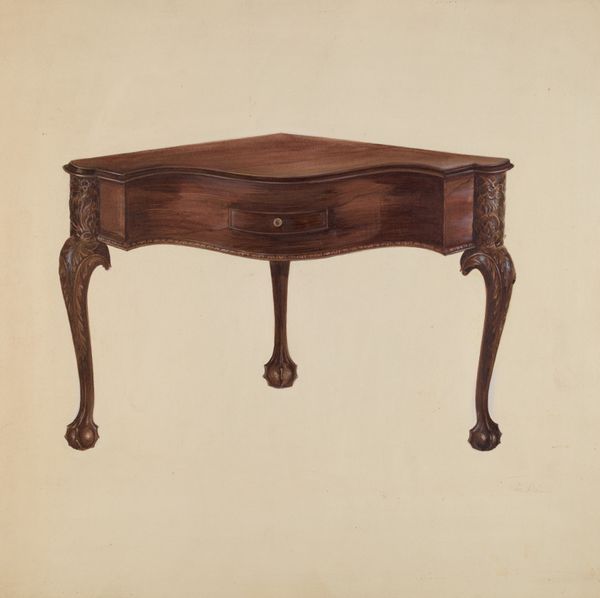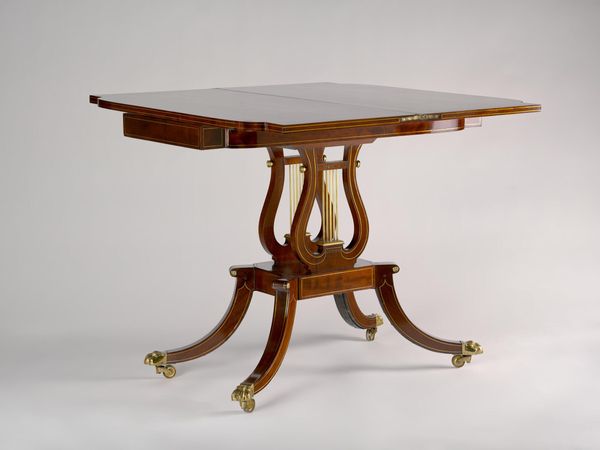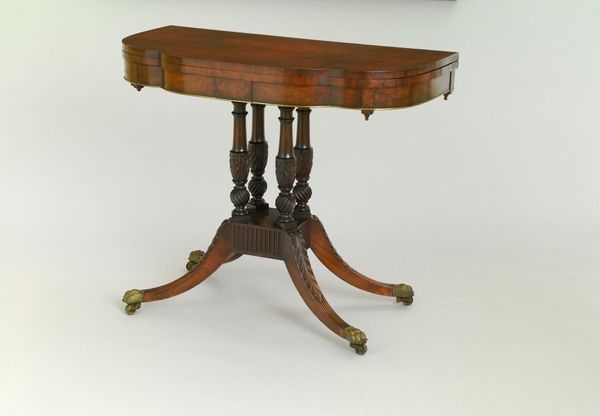
drawing
#
drawing
#
academic-art
#
watercolor
#
realism
Dimensions: overall: 34.3 x 51.1 cm (13 1/2 x 20 1/8 in.) Original IAD Object: 69" wide; 60" deep; 20 3/4" high
Copyright: National Gallery of Art: CC0 1.0
Curator: Look at this image. Amos C. Brinton captured "Gateleg Table" with a masterful use of watercolor back in 1939. Editor: It has a quiet dignity, doesn’t it? A very poised object, depicted with such meticulous care. You can almost feel the smooth polish of the wood and the patience that went into its making. Curator: It really evokes a sense of domesticity and a certain level of social positioning, wouldn't you say? This type of furniture reflects the values of the burgeoning middle class of that era, emphasizing stability and home ownership. The "Gateleg Table" stands not just as an object of utility but as a statement. Editor: The gateleg mechanism is inherently symbolic, representing the intersection of function and flexibility. When folded, it embodies restriction or hidden potential. Opened, it's expressive of expansive hospitality. There’s almost a ritual involved in extending its surface, isn’t there? Inviting communion or discourse. Curator: And we need to acknowledge how it engages with labor—the artist’s, the furniture maker's, the individual responsible for preserving this intimate setting of home and family in an era defined by stark social inequities, which many artists attempted to redress through either documentation or political confrontation. Editor: Absolutely. And look closer at the texture. The stippling effect he’s achieved really brings out the wood grain, hinting at age, endurance. These details contribute to a sense of familiarity. Perhaps they wanted the audience to feel connected, and to appreciate the value embedded in handcrafted, everyday objects. Curator: The table has been rendered so accurately that it is difficult not to imagine the gendered connotations connected to interior labor—a space primarily presided over by women in order to support societal structures dominated by male individuals. This is evident when compared to later works made by other artists engaged with these topics. Editor: Well, I’m left pondering what narratives have played out on its surface: family dinners, political discussions, late-night studies… What objects did it support, and what stories might it tell if only it could speak? It holds, in many ways, an entire realm of memories.
Comments
No comments
Be the first to comment and join the conversation on the ultimate creative platform.
